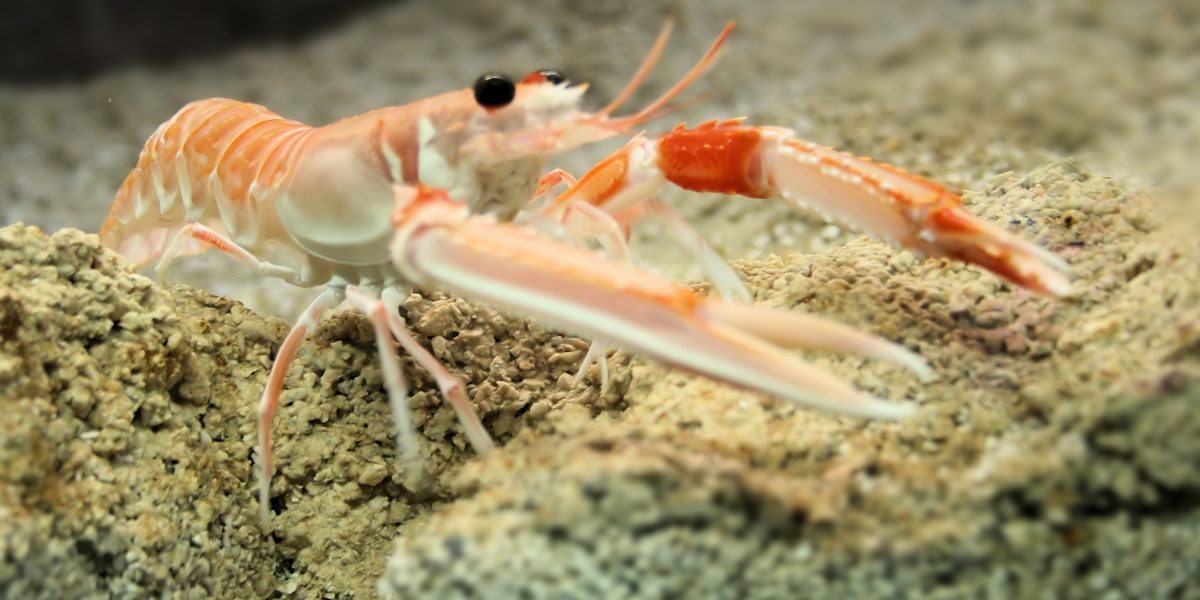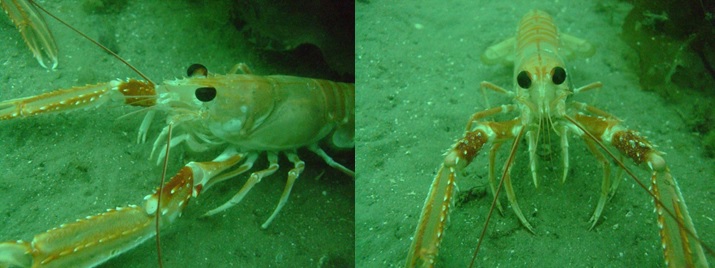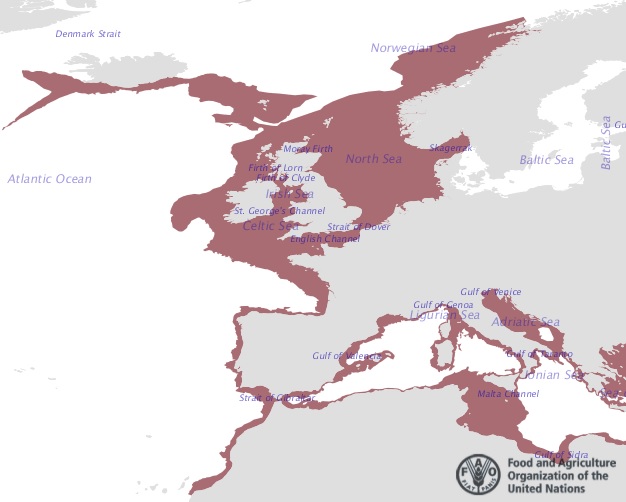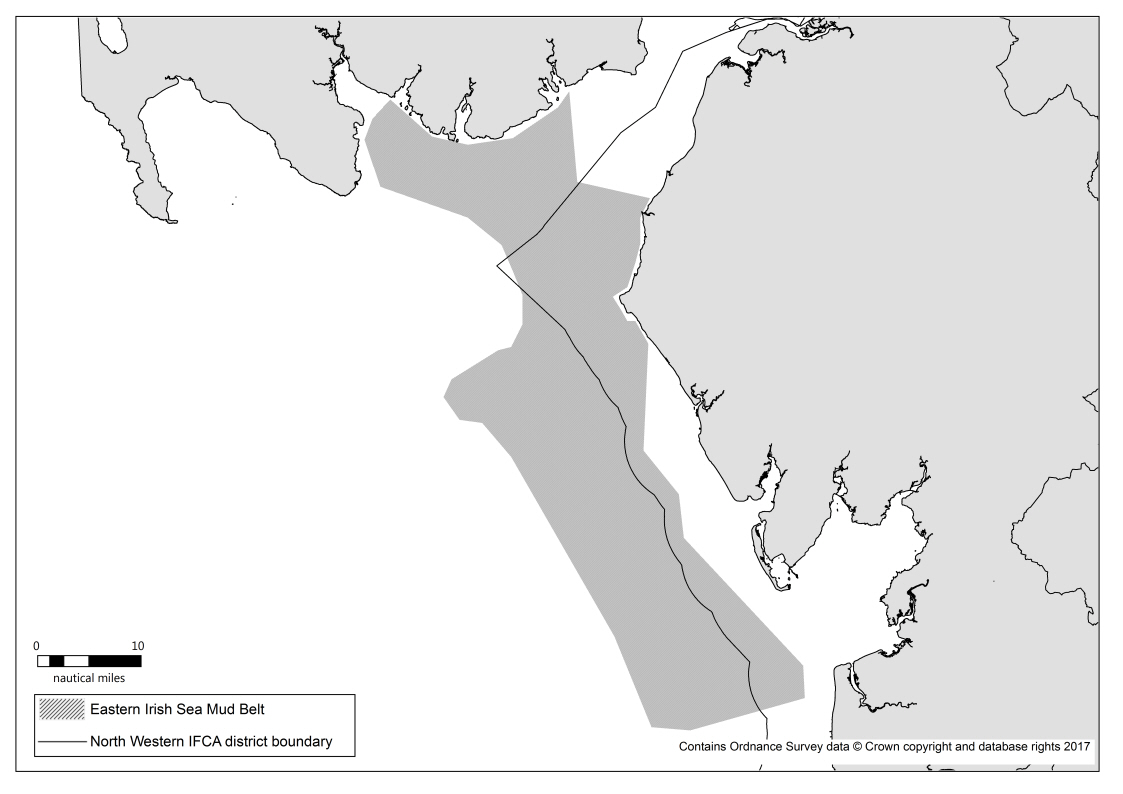Nephrops

Image: © Hans Hillewaert / CC BY-SA 4.0
Scientific Name: Nephrops norvegicus
Also Known As: Nephrops, Dublin Bay prawn, Norway lobster, scampi, langoustine
MCRS: 20 mm (carapace length) or 70 mm (overall length)
Description
Nephrops is a small, pale orange lobster which grows to a maximum of 25 cm, though individuals usually reach around 18-20 cm in length. The head and thorax are fused together forming a carapace which is attached to a segmented abdomen and a broad fanned tail. They possess two pairs of antennae and large, black movable eyes.
Habitat and Distribution

Image: Mandy Knott
Nephrops are commonly found at depths of 20-800m. They live in shallow burrows within fine or silty mud and usually remain in their burrows during the day and come out at night to forage. They can be found around most British coasts but none have been recorded in the English Channel, the Bristol Channel or the west coast of Ireland.

©FAO (Source Accessed 25/10/2017)
The species is found throughout the North East Atlantic from Iceland to Morocco and within the Mediterranean and the Adriatic seas.
Life Cycle, Reproduction and Feeding
Nephrops are opportunistic predators and feed primarily on other crustaceans, but have been known to feed on molluscs, echinoderms and polychaetes, and their growth rate can vary depending on food availability. They leave their burrows at dawn and dusk to forage, exhibiting diel feeding patterns.
Nephrops do not reach sexual maturity until 2-3 years. They have an annual reproductive cycle, where sexually mature individuals moult towards the end of spring, and mating takes place before the females’ exoskeleton has hardened. Fertilised eggs are carried on the female’s abdomen for 8-9 months. Females tend to remain within their burrows during this time. Fecundity of the species varies geographically and larval mortality rates can be high. Potential recruitment from other populations of Nephrops norvegicus is low as nephrops larvae do not have a high dispersal potential and adult nephrops show no evidence of migration. Life span in the Irish Sea is understood to be 8-9 years.
Additional Information
Nephrops, like other crustaceans, grow incrementally by moulting their hard exoskeleton and forming a new, larger one. They lose age determining structures with every moult so can be very difficult to age.
In the NWIFCA District
Nephrops are fished from boats rigged with trawls, which are based throughout the district at ports including Whitehaven, Maryport and Fleetwood. Boats also come from Northern Ireland to fish nephrops grounds. This fishery is most active in spring and early summer and boats may relocate around the UK to follow stocks of different populations, eg. targeting the west coast of Scotland in autumn/winter.
There are two mud belts in the Irish Sea: eastern and western. The eastern mud belt falls within the District, stretching from the Solway Firth to the south of Morecambe Bay. This provides good ground for Nephrops to inhabit, making the eastern Irish sea mud belt a very important and active nephrops fishery.

Nephrops are fished commercially using demersal otter trawls. The otter doors ‘herd’ the nephrops into the net. Nephrops can also be caught using creels, which are baited pots set and left in the water. The animals enter the creels attracted by the bait, but cannot get out again. This method is not widely used in this area.
Fisheries Management
Within the District there are byelaws which restrict the type of trawl that can be used, and vessel specifications including engine size and vessel length. These restrictions vary depending on areas within the District.
Find out more about this here: http://www.nw-ifca.gov.uk/byelaws/
Where commercial trawling occurs in Marine Protected Areas it undergoes an assessment to ensure the activity does not cause risk to conservation features. HRAs carried out for trawling in the District’s European Marine Sites can be found here.